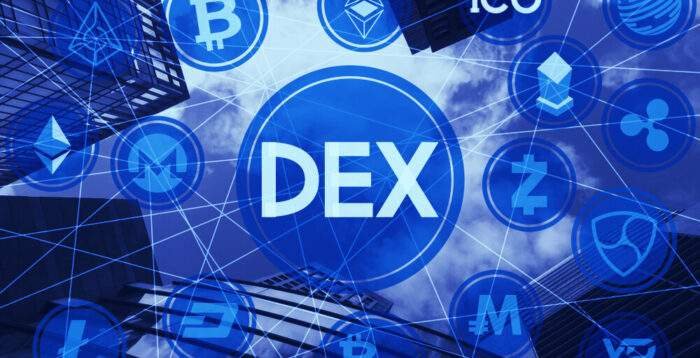Essential Tactics for Maximizing Revenue on Decentralized Exchanges

Decentralized exchanges (DEXs) have emerged as a popular alternative to traditional centralized exchanges in the world of cryptocurrency trading. These platforms leverage blockchain technology to facilitate peer-to-peer transactions without the need for intermediaries or central authorities. The rise of DEXs can be attributed to their potential benefits, including increased security, transparency, and user control.
Benefits of DEXs:
Increased Security: DEXs eliminate the need for users to deposit their funds into centralized wallets, reducing the risk of hacks or security breaches. Instead, transactions occur directly between users’ wallets, ensuring greater control over their assets and reducing the likelihood of theft.
Transparency: DEXs operate on public blockchain networks, allowing users to verify transactions and smart contracts independently. This transparency fosters trust within the ecosystem, as every trade and transaction can be audited and traced back to its source.
User Control: DEXs empower users by enabling them to retain custody of their funds throughout the trading process. Unlike centralized exchanges, where users must trust the platform to hold their assets, DEXs provide individuals with complete control over their private keys and wallets, mitigating counterparty risks.
Importance of Tactics for Maximizing Revenue on DEXs
While DEXs offer a range of advantages, achieving maximum revenue requires the implementation of specific tactics. These tactics encompass strategies such as understanding liquidity dynamics, researching and evaluating tokens, utilizing automated market making (AMM) platforms, staying informed about token listings and airdrops, employing risk management techniques, and exploring yield farming and staking opportunities.
By employing these tactics, traders can optimize their earnings on DEXs, capitalize on market opportunities, and mitigate risks associated with decentralized trading. It is crucial to approach DEXs with a well-thought-out plan and an understanding of the unique dynamics at play to maximize revenue while enjoying the benefits of decentralized exchanges.
Understanding Liquidity and Market Dynamics
Liquidity plays a vital role in revenue generation on decentralized exchanges (DEXs). It refers to the ease and efficiency with which assets can be bought or sold without causing significant price movements. The availability of a liquid market enables traders to execute transactions quickly and at competitive prices. This has a direct impact on profitability through two key factors: tighter spreads and better execution prices.
Tighter spreads are the difference between the highest price a buyer is willing to pay and the lowest price a seller is willing to accept. In a liquid market, with numerous participants actively trading, the bid-ask spread tends to be narrower. This means that traders can buy at a slightly lower price and sell at a slightly higher price, reducing their trading costs and increasing their potential profits.
Better execution prices are also a result of liquidity. In a liquid market, there are more buyers and sellers, allowing trades to be executed efficiently without significant price slippage. Slippage occurs when the execution price deviates from the expected price due to insufficient liquidity. By minimizing slippage through liquidity, traders can maximize their profits by executing trades closer to the desired price.
To select DEXs with sufficient liquidity for the tokens or assets they wish to trade, traders can employ a few key tips. They can assess the trading volume of the DEX, as higher trading volumes generally indicate greater liquidity. Additionally, considering the popularity and demand for specific tokens or assets can help identify DEXs with active trading communities. Exploring liquidity aggregators that pool liquidity from multiple DEXs can provide access to a broader market and better trading opportunities. Seeking user feedback and reviews can offer insights into the liquidity and trading experience on different DEXs. Lastly, market maker programs offered by some DEXs incentivize users to provide liquidity, which can enhance the overall liquidity pool and trading environment. By researching and selecting DEXs with sufficient liquidity, traders can ensure smoother trading experiences and maximize their revenue potential.
Researching and Evaluating Tokens
When trading on decentralized exchanges (DEXs) to maximize revenue, researching and evaluating tokens is crucial. Here are some tips:
Project Fundamentals: Assess the project’s whitepaper, roadmap, and team to understand its goals, technology, and potential for real-world adoption.
Team Credibility: Evaluate the team’s experience and track record to determine their competence and trustworthiness.
Market Demand and Use Case: Analyze the token’s market demand and use case, considering its target audience, competition, and utility within the project ecosystem.
Trading Volume and Liquidity: Check the token’s trading volume and liquidity on DEXs to ensure ease of buying and selling at favorable prices.
Community and Social Media Presence: Engage with the project’s community to gauge sentiment and community support.
Tokenomics and Supply: Study the token’s total supply, circulating supply, and economic model to understand its long-term value potential.
Technical Analysis: Use charts and indicators to analyze the token’s price history and trends.
Independent Research: Validate claims made by the project team and conduct due diligence using reputable sources.
Utilizing Automated Market Making (AMM) Platforms
AMM platforms are key to decentralized exchanges (DEXs). They use liquidity pools and smart contracts for trading without traditional order books. Liquidity providers contribute assets to the pools, increasing liquidity and enabling faster trades. They earn fees from trades and may receive governance tokens as rewards.
Staying Informed about Token Listings and Airdrops
Token listings and airdrops on decentralized exchanges (DEXs) present unique opportunities for crypto enthusiasts and investors. Here are some highlights and suggestions to consider:
Token Listings: When a new token is listed on a DEX, it can create opportunities for early access and potential price appreciation. Investors can participate in the token’s initial trading, potentially benefiting from early price movements. Additionally, token listings can increase the visibility and adoption of a project, attracting more users and liquidity.
Airdrops: Airdrops involve the distribution of free tokens to eligible holders. They can be a way for projects to distribute tokens, reward users, or raise awareness. Airdrops can provide value to participants, especially if the tokens have future utility or potential market value.
Employing Risk Management Strategies
Set stop-loss orders: Use predefined exit points to limit potential losses if prices move unfavorably.
Diversify your portfolio: Spread investments across different assets to reduce the impact of poor performance.
Allocate funds to higher-risk assets: Determine your risk appetite and assign a portion of your portfolio to assets with higher volatility and potential returns.
Evaluate risk-reward ratio and position sizing: Assess potential profits and losses before each trade, and limit the size of each position to a small percentage of your capital.
Continuously learn and research: Stay informed about the assets and projects you trade, market trends, and regulatory developments.
Regularly review your portfolio: Monitor performance, market conditions, and adjust risk exposure through rebalancing.
Maintain emotional discipline: Avoid impulsive decisions driven by short-term fluctuations or fear of missing out.
Exploring Yield Farming and Staking Opportunities
Yield farming and staking are popular DeFi strategies where users lock up or stake their tokens to earn additional rewards. By participating, users can generate passive income, potentially benefit from token appreciation, participate in governance, and gain early access to opportunities within the DeFi ecosystem. However, these strategies carry risks and require thorough research and caution.
Conclusion
In conclusion, yield farming and staking in the DeFi ecosystem offer potential for passive income and token appreciation. Conduct thorough research and choose reputable projects. Additionally, decentralized exchange development services can help you create a secure and efficient trading platform to maximize revenue potential. Exercise caution, research, and consider reliable development teams for successful participation in DeFi and DEX development.




